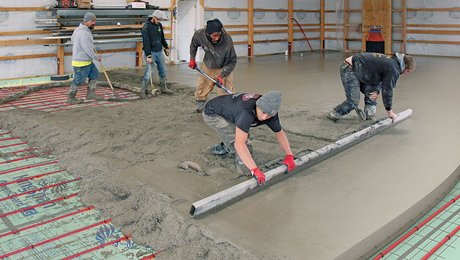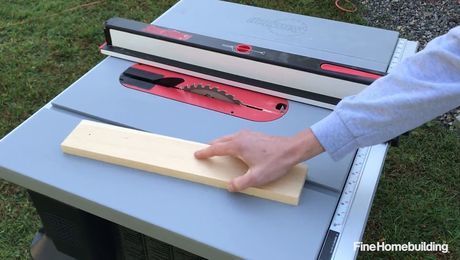What hook length does the IRC require? Footing x-section is 18″, depth 8″, dowels #4 grade 60 @ 24″.
Edited 5/9/2007 7:01 am ET by Gene_Davis

Making your own heated floor assembly may save money, but it can also cause problems.

"I have learned so much thanks to the searchable articles on the FHB website. I can confidently say that I expect to be a life-long subscriber." - M.K.
Get home building tips, offers, and expert advice in your inbox

Dig into cutting-edge approaches and decades of proven solutions with total access to our experts and tradespeople.
Start Free Trial Now
Get instant access to the latest developments in green building, research, and reports from the field.
Start Free Trial Now
Dig into cutting-edge approaches and decades of proven solutions with total access to our experts and tradespeople.
Start Free Trial NowGet instant access to the latest developments in green building, research, and reports from the field.
Start Free Trial Now© 2025 Active Interest Media. All rights reserved.
Fine Homebuilding receives a commission for items purchased through links on this site, including Amazon Associates and other affiliate advertising programs.
Get home building tips, offers, and expert advice in your inbox
Become a member and get instant access to thousands of videos, how-tos, tool reviews, and design features.
Start Your Free TrialGet complete site access to expert advice, how-to videos, Code Check, and more, plus the print magazine.
Already a member? Log in
We use cookies, pixels, script and other tracking technologies to analyze and improve our service, to improve and personalize content, and for advertising to you. We also share information about your use of our site with third-party social media, advertising and analytics partners. You can view our Privacy Policy here and our Terms of Use here.
Replies
Don't know if it's in the code but you make them tall enough to tie to the top horizontal in your wall.
Gene,
I can't answer the question directly as I don't know what the IRC code call is.
Here in the city I live in however the short leg of the "L" needs to be 6" min.. "L"'s are installed with hooks facing in alternate directions.
Without looking it up I recall overlap to be 30 diameters but what we do is overlap at least 2 feet and bend the verticals that way, too.
What if you have 2 continuous bars at the top of the stemwall?
All the stemwall and block wall work I've done or been exposed to has been a single top rod. The requirement for tying is to assure the proper coverage of the steel and so it doesn't flop over during the pour.
When the vertical rod is bent over for the top hook all it has to do is be supported to remain in position between the two spaced top bars. With a single bar we just wire tie it to the easiest position whether it be under or along side the horizontal doesn't matter, it just has to have the cover.
Since we normally have a 2 foot overlap, the verticals stick up that amount from the footing. The block is laid up with the lintel blocks last, the horizontal rod is dropped into the cradle and the top leg of the vertical is bent and dropped into the required cells, assuring that the leg goes all the way to the bottom of the wall to get the required overlap.
At the bottom course there must be a knockout block so the inspector can see the vertical rods and verify the tie. A scrap of plywood is tapconed over the hole for the pour.
On stem walls we fill every course, even though not technically required. On full height walls we fill all the cells that have vertical steel as well as all the cells in the top two courses. That effectively gives us a solid 16" tall poured lintel.
Your original question asked about two bars. I could make the assumption that you mean one over the other in two top courses of lintel block. Am I correct? The verticals would still only be tied off to the rod in the top course to keep it centered in the cell.
What if you have 2 continuous bars at the top of the stemwall?
I always do. Engineering calls for #6, 2" concrete cover. Bending for the corners is interesting. PAHS Designer/Builder- Bury it!
Not uncommon to have (2) #5 continuous at the top of a wall here, if it's taller than maybe 24". I usually take a 6' piece, bend it 90 in the middle, and tie it in as the "outside" of the corner.
#5 I can bend with my cutter/bender, #6 doesn't fit. Kinda stiff for the pipe and foot technique we use for #4. You guys were talking stem walls, a little shorter than mine.
I've a little more weight sitting on my walls than most houses (~4800 plf). Do the same thing with corners and a short piece. I got started with concrete when the concrete contractor wanted $8500 to tie $1500 worth of rebar. He told me it would take a long time. I didn't know any better, just didn't have the $8500. Very lucrative learning experience. PAHS Designer/Builder- Bury it!